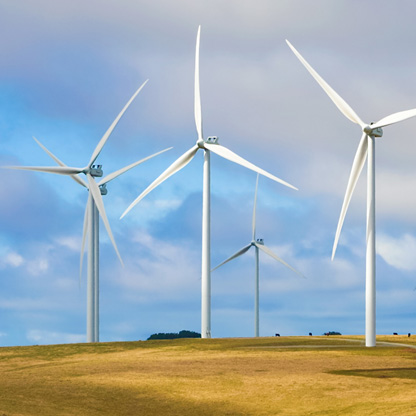Overcame hurdles to set targets
Arriving at the targets wasn’t easy. “Given we have such a diverse range of businesses, those targets had to be accepted and applied at the business level, as well as the Wesfarmers board level,” says Luigi.
Furthermore, last year Wesfarmers ranked number one, from a sustainability perspective, in Dow Jones’ index of the world’s leading retailers. Richard Wiles, Director, Institutional Banking & Markets (IB&M), at Commonwealth Bank says, “there’s no doubt the work that Wesfarmers was already doing was fantastic. But for the integrity of the structure, they had to exceed what they already planned to do.” It was, says Luigi, a matter of “coming out with targets that were seen to be stretch targets from the lender’s point of view, but that we thought were also achievable, albeit with some effort and some capital expenditure”.
Stronger communities through social inclusion
After years of concerted effort, 3% of Wesfarmers’ Australian workforce were Aborigines or Torres Strait Islanders. However, the percentage slipped to 1.7% after the 2018 Coles demerger. Naomi Flutter, Wesfarmers’ Executive General Manager, Corporate Affairs, says “achieving appropriate levels of Aboriginal employment across Australia will build stronger communities and the benefits will flow through our business.”
The emissions reduction target only applies to WesCEF which produces ammonium nitrate. Currently no technology can remove the hard-to-abate emissions from the production process. However, Wesfarmers invests in research domestically and, where appropriate, offshore, to support a breakthrough as part of the group’s net zero aspirations for that business with a 2050 timeline.
Further down supply chains
Other potential targets could have been gender diversity in leadership roles, renewable energy use and ethical sourcing audits.
More generally, Mark Peacock, Commonwealth Bank’s Director, Sustainable Finance, IB&M, foresees potential targets around reduction of waste to landfill or content of recyclable materials used in production processes or for end-users. “We might even see organisations increasingly influence their supply chain around good environmental or social practices.”
Reflecting this understanding that ESG and sustainable finance are increasingly important to organisations and their stakeholders, Commonwealth Bank has created a new team of risk and product specialists. Charles Davis, Head of Sustainable Finance and ESG, says the team provides an end-to-end service to assist clients on their transition to a more sustainable future.
Enhanced ESG credibility
Luigi says the working capital facility clearly demonstrates Wesfarmers’ commitment to ESG considerations by tying its cost of finance to achieving those targets. “It is an actual measurable outcome and a measurable impact on the cost of our finance if we achieve those targets or we don’t.” He believes the more ESG criteria Wesfarmers satisfies, the broader and more diverse range of investors that will look at its debt, meaning better access to markets and pricing.
Naomi says the transaction proves that the group’s focus on the environment and the community where it operates, improves its credit proposition. “It is exciting to see a lender say this enhances your credit story and we will reflect it in the margin that we charge,” she says. “They are attempting to value those benefits that make Wesfarmers a stronger credit proposition.”



